First Screening – A Call in the Rainforest
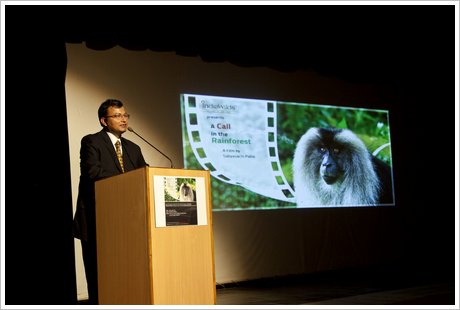
First screening of the film “A Call in the Rainforest” held in Alliance Francaise de Bangalore on 1st October, 2011. You may check the earlier announcement regarding the same:
http://www.indiawilds.com/diary/a-call-in-the-rainforest-screening-at-bangalore/
and the one minute preview of the film here:
http://www.indiawilds.com/diary/inspiration-for-the-film-a-call-in-the-rainforest/
There was a good turnout of people despite the sudden rains bringing Bangalore to a virtual halt. There were a few last minute blues as one of our speakers from Coimbatore was also delayed by 10 minutes due to rain. Wish I had access to a projector that can project Full High Definition films. Hopefully, RED will launch an affordable 4K projector in the near future. Nevertheless, the film was well received and people liked the amount of information packed in within the 18 and half minutes. A few people have asked me to document other areas as well, anyway those are in the future.
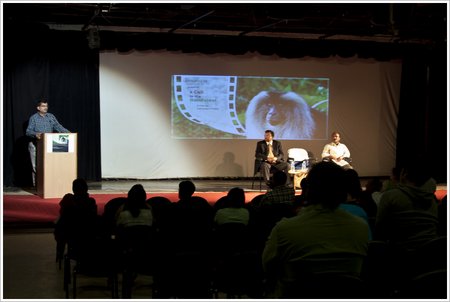
The following was the final program:
5:20 PM – 5:25 PM :: Introduction & Lighting of the Lamp
5:25 PM – 5:45 PM :: Screening of the film “A Call in the Rainforest”
5:45 PM – 6:00 PM :: Presentation on Road Kills Study by R. Arumugam, Biologist Anamalai Tiger Foundation
6:00 PM – 6:15 PM :: Keynote address by Dr. Ravi Chellam, Director (Conservation & Research) Madras Crocodile Bank Trust
6:15 PM – 6:30 PM :: Filmmakers Perspective by Sabyasachi Patra
6:30 PM – 7:15 PM :: Question and Answer Session
7:15 PM – 7:20 PM :: Vote of Thanks
Mr. R. Arumugam presented his findings on the road kills study conducted in the Chinar and Aliyar-Atakatti roads. He highlighted the problems posed by the wide roads and difficulty in climbing over the parapet walls and crossing the roads especially by the herpetofauna. The data presented by him was an eye opener for a lot of people.
Dr. Ravi Chellam shared his perspectives on various conservation issues and expressed his shock at the tragic state of the Lion-tailed Macaques in the Valparai range of Anamalais. His perspectives and frank responses to various conservation issues left a deep impession on the audience.
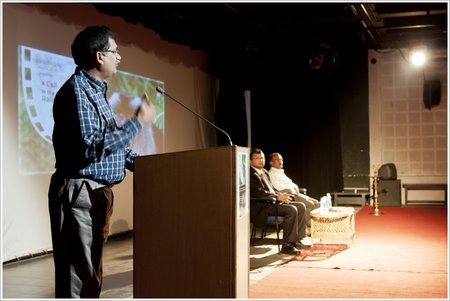
I was surprised by the quality of questions asked during the discussions. The audience was deeply involved throughout the program and the discussions lasted for nearly 50-55 mins.
Presenting Mementoes
In this image presenting memento to R. Arumugam
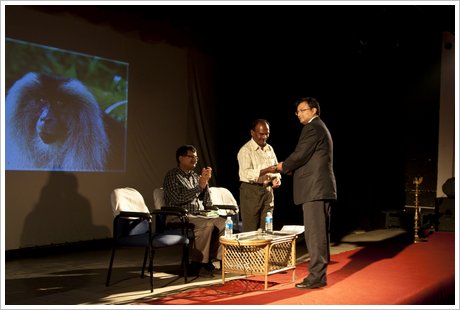
It was good to meet some of our IndiaWilds members for the first time. After the event, I was talking with media so could not personally spend time with some of you. Hope to catch up with you all sometime next.
There will be some more screenings in a few corporates and colleges in Bangalore. And I have to work out the DVD release dates soon.
EDIT: Uploading one news article that appeared in Nimma Bengaluru
EDIT 2: Published in Hindu on 12th October, 2011
http://www.thehindu.com/todays-paper/tp-features/tp-neighbourhood/article2532730.ece
Speaking on behalf of the lion-tailed macaque
MADHAVI SHIVAPRASAD
Some remarkable efforts at protecting endangered species, notably the tiger, have been made over the years by wildlife conservationists. However, what about smaller, less charismatic species that are as threatened but barely get a mention in research and documentation?
This question drove Chennai-based wildlife conservationist, photographer and filmmaker Sabyasachi Patra to make his first film, A Call in the Rainforest , documenting the drastic changes in behaviour of the endangered lion-tailed macaque (LTM) due to human activity.
The 18-minute documentary has been shot in the town of Valparai, home to a majority of the LMT population and situated in the evergreen rainforests of the Annamalai Hills in the Indira Gandhi Wildlife Sanctuary, Western Ghats.
At a recent screening of his documentary at Alliance Fran�aise, Sabyasachi shared his concerns and possible solutions to protecting the species.
The documentary, with its keen attention to detail, records some startling behaviour of the primate. Especially striking is the single, shrill mating cry of the macaque heard in the beginning. �For such a creature to call out so loudly and not receive a response had me taken aback. What if someday, this is the only one remaining?� asks the director.
Sabyasachi also managed to capture several other rare sights that normally escape the layman’s eye, such as the shot of a macaque dislodging a honeycomb from a tree.
Ravi Chellam, the former director, Wildlife Conservation Society India, and a panellist at the screening, expressed regret at how fast the LTM numbers seem to be dwindling. �The inherently arboreal primate, feeding mostly on ripe fruits, is forced to turn terrestrial due to felling of trees and widening of roads to make way for the demands of tourism.�
Enforcing speed limits was seen as one solution to prevent road kills, especially at night. �Larger animals such as elephants have to wait for hours to let vehicles pass and smaller animals such as toads and frogs fall prey to speeding vehicles,� said panellist R. Arumugam, biologist at the Anamalai Tiger Foundation.
Conservation is possible only through optimism grounded in reality. �We look at ecology as external rather than as an integral part of our survival, thus failing to connect with it,� said Dr. Chellam.
The documentary manages to not only hold attention but also to enlighten the viewer through a combination of meticulous camerawork and persuasive argument that capture a hard-hitting reality.
MADHAVI SHIVAPRASAD
- GoPro Hero 12 Black - 6 September,2023
- Leopards: The Last Stand - 2 July,2023
- Drifting in the Waters of Sundarbans - 26 March,2023

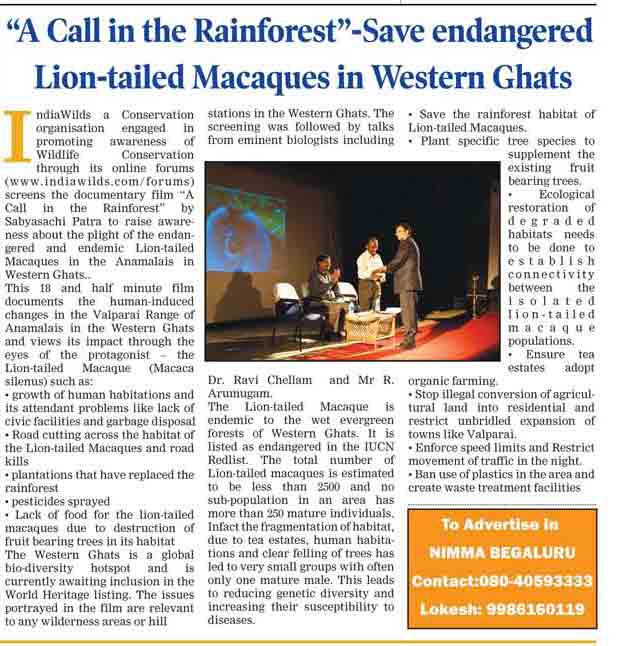
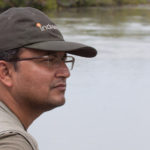
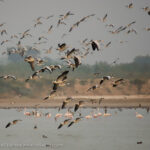
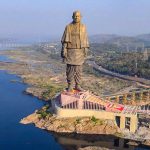
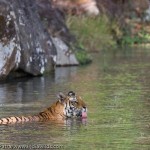



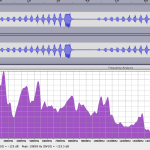





All the best for your future screenings Mr Patra, do update us about the schedule, nice to know that you are realising DVD too
Way to go, Sabyasachi– hope this is just the begining of a very successful journey.. all the best. Look forward to watching the film when it releases in Delhi.
Wow congrats and all the best for your bright future
That’s the son of a Zoology Prof. My heartiest wishes in your feature endeavour.